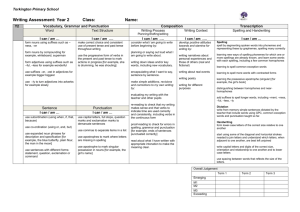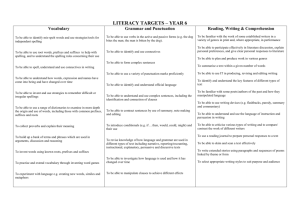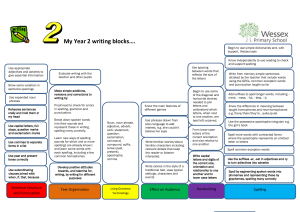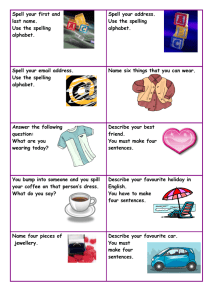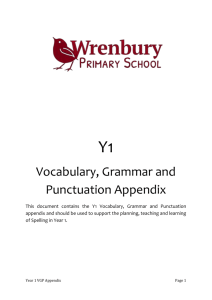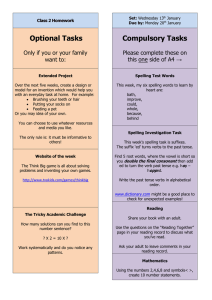Writing Grammar and Punctuation • Know the formation of nouns
advertisement
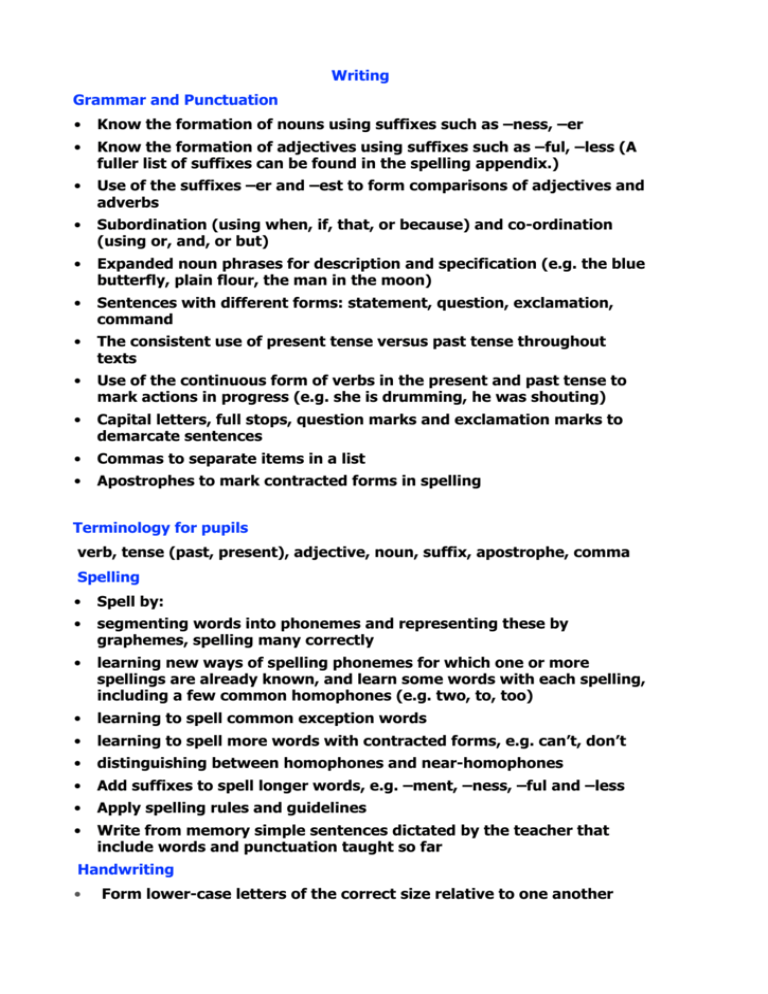
Writing Grammar and Punctuation • Know the formation of nouns using suffixes such as –ness, –er • Know the formation of adjectives using suffixes such as –ful, –less (A fuller list of suffixes can be found in the spelling appendix.) • Use of the suffixes –er and –est to form comparisons of adjectives and adverbs • Subordination (using when, if, that, or because) and co-ordination (using or, and, or but) • Expanded noun phrases for description and specification (e.g. the blue butterfly, plain flour, the man in the moon) • Sentences with different forms: statement, question, exclamation, command • The consistent use of present tense versus past tense throughout texts • Use of the continuous form of verbs in the present and past tense to mark actions in progress (e.g. she is drumming, he was shouting) • Capital letters, full stops, question marks and exclamation marks to demarcate sentences • Commas to separate items in a list • Apostrophes to mark contracted forms in spelling Terminology for pupils verb, tense (past, present), adjective, noun, suffix, apostrophe, comma Spelling • Spell by: • segmenting words into phonemes and representing these by graphemes, spelling many correctly • learning new ways of spelling phonemes for which one or more spellings are already known, and learn some words with each spelling, including a few common homophones (e.g. two, to, too) • learning to spell common exception words • learning to spell more words with contracted forms, e.g. can’t, don’t • distinguishing between homophones and near-homophones • Add suffixes to spell longer words, e.g. –ment, –ness, –ful and –less • Apply spelling rules and guidelines • Write from memory simple sentences dictated by the teacher that include words and punctuation taught so far Handwriting • Form lower-case letters of the correct size relative to one another • Write capital letters and digits of the correct size, orientation and relationship to one another and to lower case letters • Use spacing between words that reflects the size of the letters Composition • Develop positive attitudes towards and stamina for writing by: • writing narratives, about personal experiences and those of others (real and fictional) • writing about real events, e.g. visits, visitors • writing for different purposes, e.g. letters, invitations, instructions • consider what they are going to write before beginning by: • planning or saying out loud what they are going to write about • writing down ideas and/or key words, including new vocabulary they have learnt from their reading, wider experiences and conversations about language encapsulating what they want to say, sentence by sentence • Make simple additions, revisions and corrections to their own writing by: • evaluating their writing with the teacher and other pupils, re-reading to check that their writing makes sense and that verbs to indicate time (tense) are used correctly and consistently, including verbs in the continuous form • proof-reading to check for errors in spelling, grammar and punctuation (e.g. ends of sentences punctuated correctly) • Read aloud what they have written with appropriate intonation to make the meaning clear
